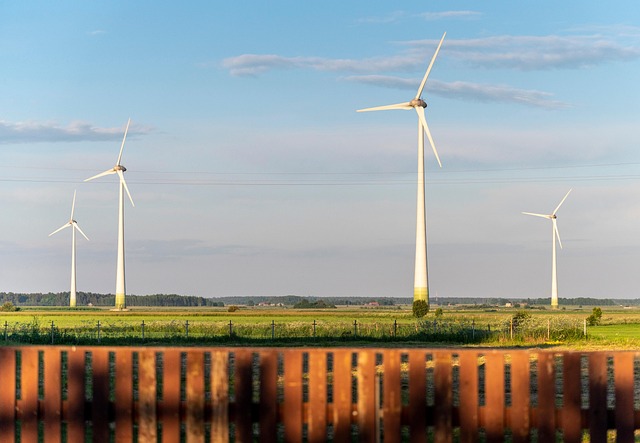The Green Revolution: How Renewable Power Is Changing the World
The world is undergoing a monumental transformation in its energy systems, popularly known as the Green Revolution. This change is largely fueled by the increasing reliance on renewable power sources such as solar, wind, hydroelectric, and geothermal energy. These renewable resources are reshaping economies, fostering innovation, and dramatically reducing carbon footprints. In this article, we explore the myriad ways that renewable power is revolutionizing the global landscape and what it means for our future.
Understanding Renewable Energy
Renewable energy sources are those that replenish naturally and can be harnessed without depleting the Earth’s resources. Unlike fossil fuels, which are finite and contribute significantly to greenhouse gas emissions, renewable sources present a cleaner alternative. The main types of renewable energy include:
- Solar Energy: Harnessing sunlight to generate electricity or heat through solar panels and thermal collectors.
- Wind Energy: Using wind turbines to convert the kinetic energy of wind into mechanical power.
- Hydroelectric Energy: Generating electricity by using flowing water to turn turbines.
- Geothermal Energy: Utilizing heat from within the Earth for direct heating or electricity generation.
- Biomass Energy: Converting organic materials into energy through combustion, fermentation, or other methods.
The Push Towards Sustainability
The significance of the Green Revolution lies in its ability to promote sustainability on a global scale. Climate change is one of the most pressing challenges facing humanity, primarily driven by the burning of fossil fuels. The shift to renewable energy addresses this issue head-on. By reducing reliance on carbon-heavy energy sources, countries can decrease their carbon emissions significantly.
This global shift has been spurred by numerous factors:
- Growing concerns over climate change and its implications for future generations.
- Advancements in technology leading to more efficient and cost-effective renewable energy solutions.
- Public support for cleaner energy options driven by increased awareness of environmental issues.
- Government policies and incentives aimed at promoting renewable energy adoption.
Economic Impacts of Renewable Energy
The adoption of renewable energy is not just an environmental imperative; it is also an economic opportunity. As the market for renewable energy expands, it creates jobs, stimulates technological innovation, and fosters energy independence.
One of the most significant economic benefits is job creation. The renewable energy sector has been one of the fastest-growing job markets in recent years. According to the International Renewable Energy Agency (IRENA), the renewable energy sector employed over 11 million people worldwide in 2018, with growth expected to continue. Jobs range from research and development to manufacturing, installation, and maintenance of renewable energy systems.
Additionally, the transition to renewables promotes energy independence. Countries that invest in domestic renewable resources can reduce their dependence on imported fossil fuels, thereby bolstering their national security. This shift not only creates a more resilient energy infrastructure but also enhances economic stability as nations become less vulnerable to global oil price fluctuations.
Technological Innovations
The Green Revolution is supported by numerous technological innovations that enhance the efficiency and reduce the costs of renewable energy systems. In recent years, significant advancements have been made in several areas:
- Solar Panels: The efficiency of solar panels has dramatically improved, with new technologies such as bifacial panels and solar tracking systems enabling better energy capture.
- Energy Storage: Developments in battery technology, notably lithium-ion and flow batteries, have improved the storage of renewable energy, addressing one of the main challenges of solar and wind power.
- Smart Grids: Intelligent energy networks allow for better integration of renewable energy into existing grids, optimizing energy distribution and reducing waste.
- Vertical Wind Turbines: Innovations in turbine design are making wind energy more accessible in urban environments, where traditional horizontal-axis turbines may not be feasible.
The Role of Policy and Regulation
Government policies are crucial in driving the success of the Green Revolution. A variety of incentives, regulations, and international agreements have been established to encourage the adoption of renewable energy. Some key policies include:
- Subsidies and Tax Incentives: Many countries offer financial incentives for businesses and homeowners to invest in renewable energy technologies.
- Renewable Portfolio Standards (RPS): These mandates require utility companies to obtain a certain percentage of their energy from renewable sources.
- Carbon Pricing: Implementing carbon taxes or cap-and-trade systems holds companies accountable for their carbon emissions, encouraging them to shift to cleaner energy sources.
- International Agreements: Agreements such as the Paris Accord foster global cooperation by setting targets for greenhouse gas emissions reductions, which include increasing renewable energy production.
Global Case Studies
Countries around the globe are demonstrating the potential of renewable energy to transform their economies and energy systems. Here are a few notable examples:
Germany: Renowned for its Energiewende (“energy transition”), Germany has made significant strides in renewable energy adoption, particularly in wind and solar power. The country aims to have 65% of its electricity generated from renewable sources by 2030, showcasing its commitment to reducing carbon emissions.
China: As the world’s largest producer of solar panels and wind turbines, China is leading the charge in renewable energy investment. The government has set ambitious targets to increase non-fossil fuel energy sources to 20% of total energy consumption by 2025, significantly impacting both local and global energy markets.
Costa Rica: With its commitment to sustainability, Costa Rica generates more than 99% of its electricity from renewable sources, primarily hydroelectric power. The country’s efforts showcase how developing nations can successfully harness renewable energy to support economic growth while preserving the environment.
The Future of Renewable Energy
As we move forward, the future of renewable energy looks promising, albeit with challenges to overcome. The following trends are likely to shape the next phase of the Green Revolution:
- Integration of Renewable Sources: An increasing focus on combining different energy sources, including solar, wind, and storage solutions, will create a more resilient and efficient energy system.
- Decentralization: The rise of microgrids and community-based energy projects will empower local communities and increase energy access worldwide.
- Electrification of Transportation: The shift toward electric vehicles will be pivotal in reducing carbon emissions, requiring an expanded renewable energy infrastructure to support charging stations.
- Global Collaboration: As the climate crisis becomes more pressing, continued global partnerships and knowledge sharing will be essential to tackle shared challenges and accelerate the transition to renewables.
Conclusion
The Green Revolution represents a fundamental shift in how we produce and consume energy, with profound implications for our environment and economy. Renewable power is not just a trend; it is a vital part of a sustainable future. By embracing this transition, we are not only addressing the urgent call for action against climate change but also fostering a more resilient and equitable world for generations to come. As individuals, communities, and nations, we share the responsibility to champion renewable energy solutions and drive the changes necessary for a sustainable planet.



